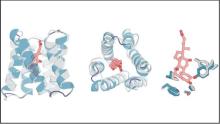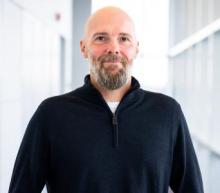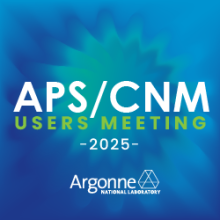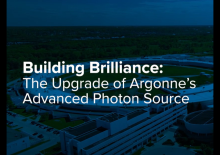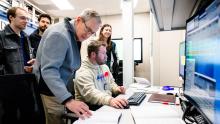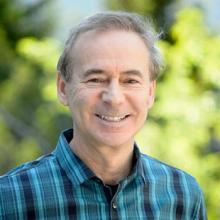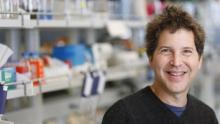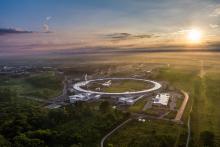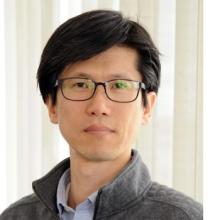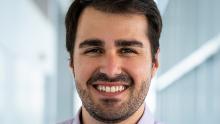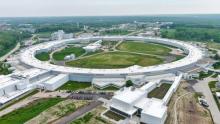News Feed - APS/User News
Haskel, a group leader at the Advanced Photon Source, will represent Argonne as part of the Oppenheimer Science and Energy Leadership Program’s 2025 cohort.
A team in the lab of Nobel Prize winner David Baker has created a method for designing proteins that can bind and sense a range of small molecules.
Schmidt has been recognized for his contributions to mechanical engineering and beamline science.
Vaccine helps to create a kind of “broadly neutralizing antibody.
The upgraded Advanced Photon Source (APS) has achieved another key performance goal, reaching its full design beam current of 200 milliamps (mA).
Vadim Sajaev has been named the Photon Sciences (PSC) director of the APS Accelerator Systems Division (ASD) at the U.S. Department of Energy’s Argonne National Laboratory effective February 17, 2025.
Registration is now open for the 2025 APS/CNM Users Meeting, an exciting week of user science presentations, workshops, facility updates, and more, all taking place May 5-9 at Argonne.
The Facilities Integrating Collaborations for User Science (FICUS) program has opened its annual call for biological and environmental research proposals for fiscal year 2026. The deadline for Letter of Intent submission is March 6.
The eBERlight program is designed to increase biological and environmental science at the Advanced Photon Source. How can the ultrabright X-rays of the upgraded APS help to illuminate soil, air, water and biofuel crop research and provide insights into our world and its ecosystems?
Argonne scientists will be part of a new materials research center led by the National Renewable Energy Laboratory. Ten centers across nine states will receive a share of $118 million in funding to advance fundamental energy research.
As part of Argonne’s Green Ride Program, the lab has launched LabCab, an on-campus rideshare service designed to provide quick, convenient, and free rides around the Lemont campus. Get where you need to go, anywhere on campus.
The Advanced Photon Source is back in action after a year-long shutdown, during which the original electron storage ring was removed and replaced with a brand-new multi-bend achromat lattice. The upgraded APS is now circulating its world-record-breaking electron beam, generating X-rays for its updated beamlines and beginning to welcome users for its new era of scientific discovery.
The ongoing upgrade to the Advanced Photon Source (APS) continues to move forward, with the first of its new feature beamlines bringing in its first users.
Over the past 35 years, Mills built and refined photon sources to advance research in chemistry, physics, biology and beyond.
The American Physical Society has chosen Alexander Zholents, a senior physicist at the U.S. Department of Energy’s (DOE) Argonne National Laboratory, as the recipient of this year’s Robert R. Wilson Prize.
David Baker, a longtime user of the Argonne Leadership Computing Facility and the Advanced Photon Source at Argonne, is one of three recipients of the chemistry prize for 2024.
After a yearlong installation, light has returned to the world-leading Advanced Photon Source. Users across a gamut of disciplines, from materials to planetary science, are getting their research proposals ready.
Several members of the Advanced Photon Source (APS) team were among the dozens of Argonne employees honored this year with an Argonne Board of Governors Award. The annual awards recognize distinguished employee performance, outstanding service to the laboratory and excellence in education, safety and diversity, equity, inclusion and accessibility (DEIA).
Gilberto Fabbris, a physicist in the X-ray Science Division, has been named a recipient of an Early Career Research Program award from the U.S. Department of Energy (DOE) Office of Science for 2024.
The new measurement confirms the world-leading status of the APS as it returns to operation following a shutdown for a comprehensive upgrade.


